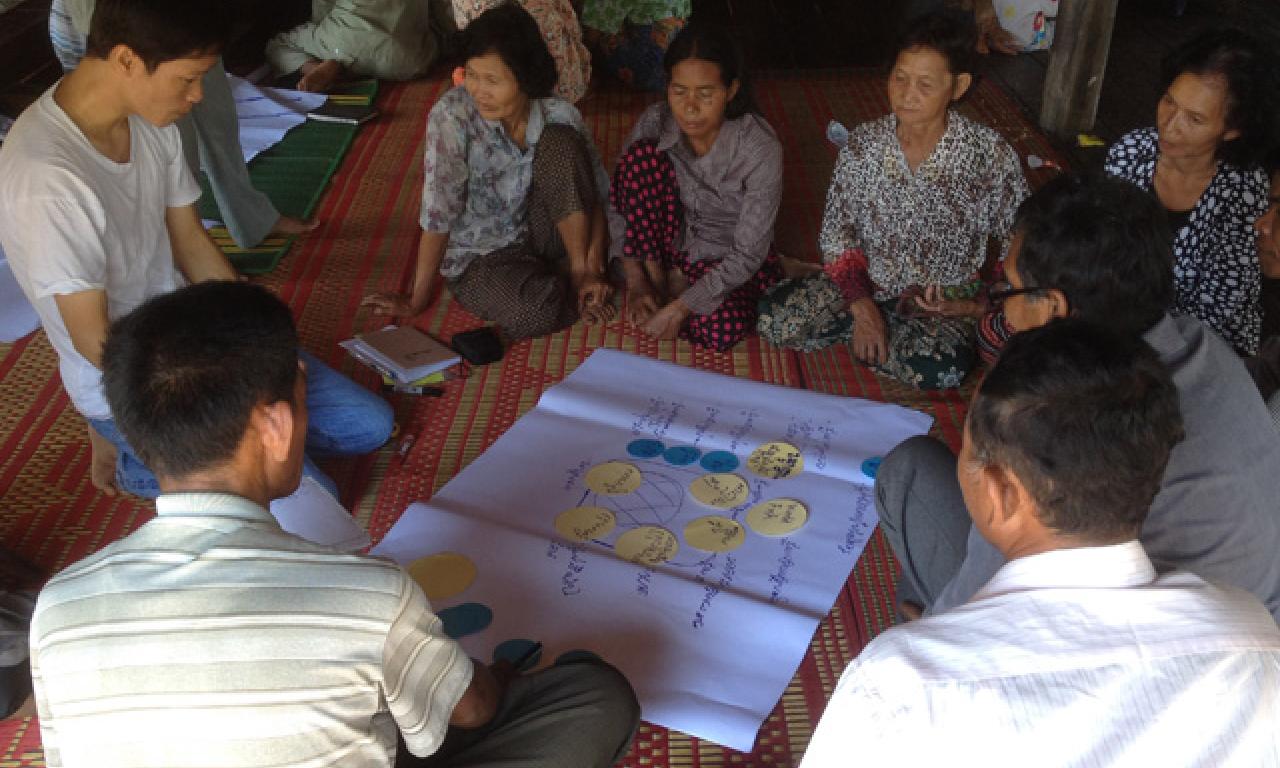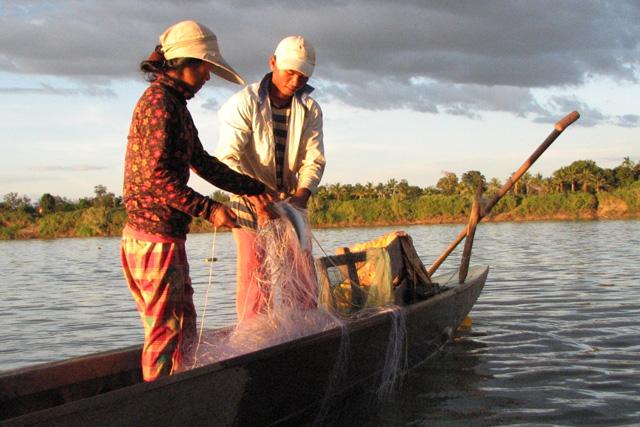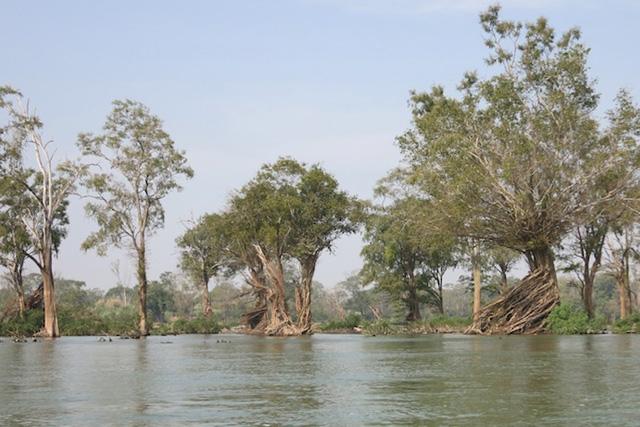
In Cambodia, freshwater fisheries are an integral part of the country’s culture, economy, and food security, with inland fisheries yielding 300,000 to 400,000 metric tons of fish annually (FAO).
Recommended publications
- Factors that drive Cambodia’s inland fish catch: What role can community fisheries play?
- Community fish refuges in Cambodia: Lesson learned
In Cambodia, freshwater fisheries are an integral part of the country’s culture, economy, and food security, with inland fisheries yielding 300,000 to 400,000 metric tons of fish annually (FAO).
To protect these resources, in 1999, a 37 km stretch of the Upper Mekong River in Stung Treng Province was designated as a Ramsar site, which is a ‘wetland of international importance’, under the Convention on Wetlands.
Known as the Stung Treng Ramsar Site, it is one of 2,220 sites across the globe. The site stretches up to the border of Lao PDR and encompasses 21 villages, 4 communes, and approximately 12,000 residents.
Many of the residents depend on the site’s fisheries for their livelihoods, but recently these livelihoods have been under threat.

The construction of dams along the Mekong River has caused habitat degradation and impedes migration, spawning, and movement of fish.
This increases the pressures faced by fishers, which can drive them to increase fishing effort or adopt illegal or destructive fishing practices, diminishing fish production and biodiversity.
Destructive, illegal, and non-discriminate fishing practices include extensive use of hot and cold electrofishing where fish are electrocuted using high-voltage electrodes, explosives, and poisons and further contribute to habitat destruction and overfishing.
Ineffective enforcement of fisheries law compounds these problems. Illegal fishing often occurs late at night, when there are no observers. Further, inadequate personnel and equipment for patrolling in the Ramsar site enables illegal fishing to persist.
These developments and activities jeopardize access to resources, food security, and the economic stability of small-scale fishers.
An approach to protect and conserve fish resources and habitats was needed to protect the economic livelihoods of these small-scale fishers.
Fisheries co-management approach
This is why, since 2011, WorldFish has worked with communities in Stung Treng to implement a co-management approach through the Integrating Fisheries Management and Wetlands Conservation project, which is funded by the Critical Ecosystem Partnership Fund (CEPF).
The project focused on establishing effective co-management arrangements, whereby local communities would help local government bodies and NGOs manage and protect vital fishery resources.
WorldFish led the development of this project, in consultation with local authorities, NGOs (CEPA, Mlop Baitong, CRDT, WWF), and select communities within the Ramsar site.
In developing the co-management arrangements, fishing communities whose voices were previously unheard by policymakers were encouraged to participate and share their concerns.
To ensure poor and marginalized households would not be disadvantaged by the conservation measures, a social safeguard strategy was developed. Included in the strategy were allowances for selected households to fish within 50m or 100m zones near the shoreline with restricted gear, provisions for livelihood alternatives, and education workshops.
In 2012, the co-management approach was formally accepted and implemented by local communities and NGO collaborators under Cambodia’s Fisheries Administration framework for community fisheries.
Empowering communities to protect vital wetlands
A key activity of the co-management arrangements was the creation of conservation zones –deep pools and fish habitats designated as fish refuges during the dry season.
WorldFish worked with nine local community fisheries groups to select and manage three pilot conservation sites in Phase I of the project (2011-2014). In Phase II (2014-16), the number of sites was scaled up to include five sites and 21 communities.
Community members actively manage these sites by patrolling conservation zones, erecting signs and flags to mark conservation zone boundaries, and running education programs to inform the general public and fishers of conservation zones.
Local communities are further empowered by a new knowledge-sharing network created to combat illegal fishing, and advocacy by the project for policy changes that promote engagement of local communities in site management planning and implementation.
By joining together, fishers can be the guardians of the Mekong
Results over the last four years show that the co-management approach holds great promise.
“Over the last few years there has been only Trey Riel (Cirrhinus caudimaculatus), likely from overfishing. Since the fisheries management project was implemented, I see greater numbers of large sized fish and new species of fish,” explains Siem Pang, an elder from Koh Hep village.

The participatory approach used while implementing this project has enabled community fisheries groups (CFis) to build their capacity to collaborate, plan, and make decisions. By positioning CFis in the center of the management development and implementation processes, communities have a platform to express their interests and priorities.
As the project draws to a close in the coming months, WorldFish will formally review the efficacy of the co-management structure in the Mekong River context.
Initial findings and feedback based on resource mapping and wealth ranking, and from focus group discussions and key informant interviews, suggests that local communities accept the management plans, and their community specific provisions.
Community fisheries groups have also committed to continue conservation activities such as having patrol groups and recording fish data in coordination with local NGOs.
Local fishers and community members are now empowered to protect their natural resources and work with government officials towards a shared goal that will ensure Cambodia’s freshwater fisheries are maintained for current and future generations.